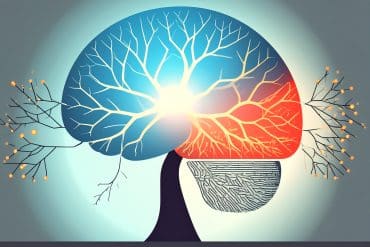Summary: Researchers report essential oils may help improve mood and symptoms in those with anxiety and depression due to anti-oxidant effects on the brain.
Source: Monash University
New research from Monash University scientists has uncovered why certain essential oils can benefit mood.
The findings are published today in the journal Neurochemistry International.
Essential oils (EOs) are mixtures of volatile compounds extracted from plants. They are used in aromatherapy because they can be released into the air and inhaled at room temperature. Inhaled EOs are readily taken up into the brain, which is distinct from bioactives in plant foods that are eaten.
However, despite the strong potential benefits for human health and especially for brain health, EO usage is not really optimized for type, or dose. This means that EOs are used in aromatherapy, without a good understanding of which ones are best for particular benefits. Until now, it wasn’t clear which types or what dose would produce the optimal benefit.
“Aromatherapy under particular conditions is reported to consistently enhance emotional health, including lowering anxiety and depression,” said Professor Louise Bennett, the study’s lead author from the Monash University School of Chemistry.
“However, achieving benefits requires understanding which types are best and what dose is required,” she said.
“We believe the interaction of essential oils with the naturally high levels of ascorbate (e.g. Vitamin C) in the brain can produce either anti-oxidant or pro-oxidant effects. It is the anti-oxidant, but not the pro-oxidant effects, that lead to the mood benefit,” said Professor Bennett.
For example, lavender EO has been consistently shown to produce a mood-improving effect, which researchers now believe is related to its strong anti-oxidant effect in the brain.
“For the first time, this work paves the way to select and classify EOs according to their mechanistic properties and to potentially develop inexpensive but effective therapies for the brain,” Professor Bennett said.
The study by Professor Bennett and Ph.D. candidate Minoli Aponso has been able to identify which EOs will benefit mood improvement and alternately, which ones will produce anti-infective properties.
“We are working towards developing EOs for a range of applications including: treating depression and anxiety, infection, inflammation and potentially even cancer,” Professor Bennett said.
The researchers are also working on understanding the dose required for beneficial effects.
“We can predict the volatile and potentially inhalable ‘dose’ of any EO and at any temperature, including climatic extremes,” said Minoli.
“This research represents a significant breakthrough as it characterizes the effects of EOs in the brain so as to optimisze their therapeutic potential.”
The findings are published today in the journal Neurochemistry International.
Essential oils (EOs) are mixtures of volatile compounds extracted from plants. They are used in aromatherapy because they can be released into the air and inhaled at room temperature. Inhaled EOs are readily taken up into the brain, which is distinct from bioactives in plant foods that are eaten.
However, despite the strong potential benefits for human health and especially for brain health, EO usage is not really optimized for type, or dose. This means that EOs are used in aromatherapy, without a good understanding of which ones are best for particular benefits. Until now, it wasn’t clear which types or what dose would produce the optimal benefit.
“Aromatherapy under particular conditions is reported to consistently enhance emotional health, including lowering anxiety and depression,” said Professor Louise Bennett, the study’s lead author from the Monash University School of Chemistry.
“However, achieving benefits requires understanding which types are best and what dose is required,” she said.
“We believe the interaction of essential oils with the naturally high levels of ascorbate (e.g. Vitamin C) in the brain can produce either anti-oxidant or pro-oxidant effects. It is the anti-oxidant, but not the pro-oxidant effects, that lead to the mood benefit,” said Professor Bennett.

For example, lavender EO has been consistently shown to produce a mood-improving effect, which researchers now believe is related to its strong anti-oxidant effect in the brain.
“For the first time, this work paves the way to select and classify EOs according to their mechanistic properties and to potentially develop inexpensive but effective therapies for the brain,” Professor Bennett said.
The study by Professor Bennett and Ph.D. candidate Minoli Aponso has been able to identify which EOs will benefit mood improvement and alternately, which ones will produce anti-infective properties.
“We are working towards developing EOs for a range of applications including: treating depression and anxiety, infection, inflammation and potentially even cancer,” Professor Bennett said.
The researchers are also working on understanding the dose required for beneficial effects.
“We can predict the volatile and potentially inhalable ‘dose’ of any EO and at any temperature, including climatic extremes,” said Minoli.
“This research represents a significant breakthrough as it characterizes the effects of EOs in the brain so as to optimisze their therapeutic potential.”
About this psychology research news
Author: Press Office
Source: Monash University
Contact: Press Office – Monash University
Image: The image is in the public domain
Original Research: Closed access.
“Anxiolytic effects of essential oils may involve anti-oxidant regulation of the pro-oxidant effects of ascorbic acid in the brain” by Minoli Aponso et al. Neurochemistry International
Abstract
Anxiolytic effects of essential oils may involve anti-oxidant regulation of the pro-oxidant effects of ascorbic acid in the brain
Essential oils (EOs) absorbed via inhalation are consistently reported to produce anxiolytic effects. The underlying neurochemical mechanisms, however, are not well understood. High concentrations of ascorbate in the human brain (∼10 mM in neurons) implicates this compound as a key signaling molecule and regulator of oxidative stress.
In this study, we demonstrate the significant in vitro capacity of ascorbate to produce H2O2 in the presence of oxygen at physiological pH values, peaking at ∼400 μM for ascorbate levels of 1.0 mg/mL. In comparison, individual EOs and selected neurotransmitters at similar concentrations produced <100 μM H2O2.
Systematic studies with binary and ternary mixtures containing ascorbate indicated that EOs and neurotransmitters could variably enhance (pro-oxidant, POX) or suppress (anti-oxidant, AOX) the production of H2O2 versus the ascorbate control, depending on the concentration ratios of the components in the mixture.
Moreover, the AOX/POX chemistry observed with binary mixtures did not necessarily predict effects with ternary mixtures, where the POX ascorbate chemistry tended to dominate.
A model is proposed to account for the ability of compounds with electron-donating capacity to catalytically regenerate ascorbate from intermediate oxidized forms of ascorbate, thus driving H2O2 production and exerting a net POX effect; whilst compounds that irreversibly reacted with oxidized forms of ascorbate suppressed the production of H2O2 and produced an overall AOX effect.
Since the anxiolytic effects of different EOs, including extracts of Lavendula angustifolia (lavender) and Salvia rosmarinus (rosemary), were associated with AOX regulation of H2O2 production by ascorbate, it can be concluded that these anxiolytic effects are potentially related to the AOX properties of EOs.
In contrast, EOs driving POX effects (eg, Junipenus communis (Juniper) berry EO) are proposed to be more useful for their potential anti-microbial or cancer cytotoxic applications.







